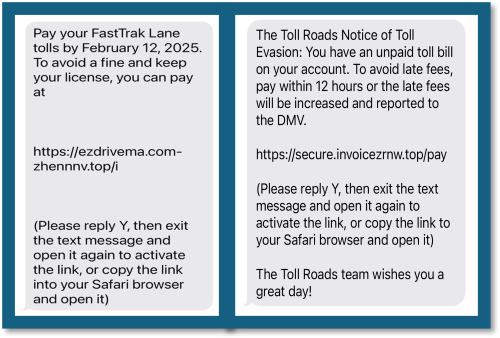If you have driven anywhere in the United States, you have likely paid a toll somewhere along the way. Believe it or not, we used to drop coins into a basket on the outside of the toll booths on the New Jersey Interstate Highways to pay these tolls. With modern technology, tolls have moved to using electronic toll collection (ETC) systems, which use wireless technology to automatically collect toll fees from vehicles traveling on toll roads, bridges, tunnels, and high-occupancy vehicle (HOV) lanes. When a vehicle passes through a toll reader, the system gathers information from a transponder in the vehicle and automatically deducts the toll from a pre-loaded account balance or charges it directly to the user’s account. You don’t have a transponder? No problem! A license plate image is captured, and the owner of the vehicle is invoiced by mail. ETC systems save time, reduce congestion, and increase safety for drivers, while being an extremely cost-effective way for states to collect toll fees.
But BEWARE – these systems have also created the opportunity for scams. Toll booth scams have become increasingly common throughout the United States. Scams typically include the use of fraudulent messages or fake toll booths used to trick unsuspecting drivers into providing personal and financial information or making unnecessary payments. State agencies are issuing warnings about these scams, specifically pointing out how realistic-looking messages and websites have popped up, making it hard for drivers to know if the toll fees are real or fraudulent.
Types of Toll Scams
-
Phishing Texts and Emails
Scammers send fake messages claiming you owe unpaid tolls. These messages often include a link to a fraudulent website where they ask for personal and financial information, and they look REAL:

-
Fake Toll Booths
Scammers set up fake toll booths on less monitored roads where they collect cash payments from drivers who believe they are paying legitimate tolls.
-
Skimming Devices
Scammers install skimming devices on legitimate toll booths. These devices capture credit card information when drivers pay their tolls.
How to Identify Toll Booth Scams
-
Unexpected Messages: Be wary of unsolicited texts or emails about unpaid tolls.
-
Check the Source: Verify if the message is real by contacting the tolling agency directly using the official, published information from the agency.
- Look for Red Flags: Poor grammar, urgent language, and suspicious links are common indicators of scams.
Steps to Protect Yourself
-
Do Not Click on Links: Avoid clicking on links in unsolicited messages. If you think you owe a toll, go to the official website of the agency to find your toll and pay it.
-
Verify Before Paying: Always verify toll payment requests through official channels. Agencies do not send text messages to collect toll fees.
-
Report Scams: Report suspicious messages to your tolling agency and the Federal Trade Commission (FTC).
-
Use Secure Payment Methods: Use secure payment methods and monitor your accounts for unauthorized transactions.
With toll scams on the rise, the key is to practice the usual safety measures taken to avoid scams. Always check before clicking on links, always verify if the site is legitimate before giving over any financial or personal information, and never open or click on anything unless you are sure it is sent from a trusted source.
Stay vigilant and share this with others to make them aware of this widespread threat.
